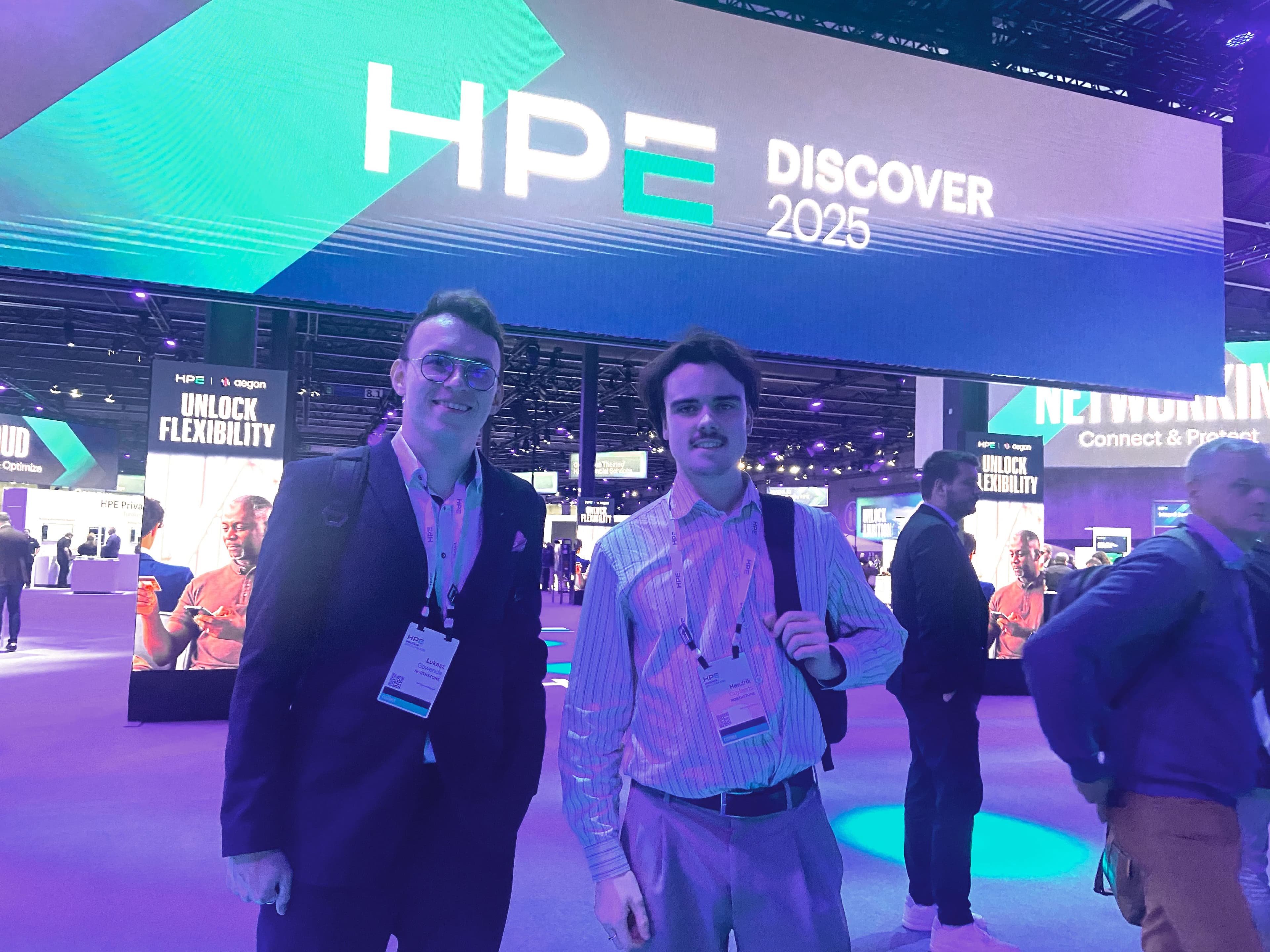How Apple Vision Pro Could Change the XR Industry

If you know anything about consumer electronics, you know what it means when Apple adds a new product category to its lineup. In the past, this company has changed the way people use personal computers, smartphones, tablets, and smartwatches. With the recent announcement of the Apple Vision Pro, Apple has turned its attention to the field of extended reality (XR), a move that could push the VR industry’s annual revenue beyond even the $15.81 billion expected in 2023.
Apple Vision Pro is set to hit Apple Store shelves in early 2024. When it does, it will command a higher price than many of its competitors. The device costs a whopping $3,500. On the other hand, it will also deliver features not offered by any other product in the industry, ranging from a fresh approach to virtual reality meetings to an all-new operating system.
Are you wondering how these features could shake up the XR industry? In this article, we’ll take a closer look at the innovations behind the inaugural Apple VR headset and how its capabilities might turn your enterprise’s virtual/augmented reality strategy on its head.
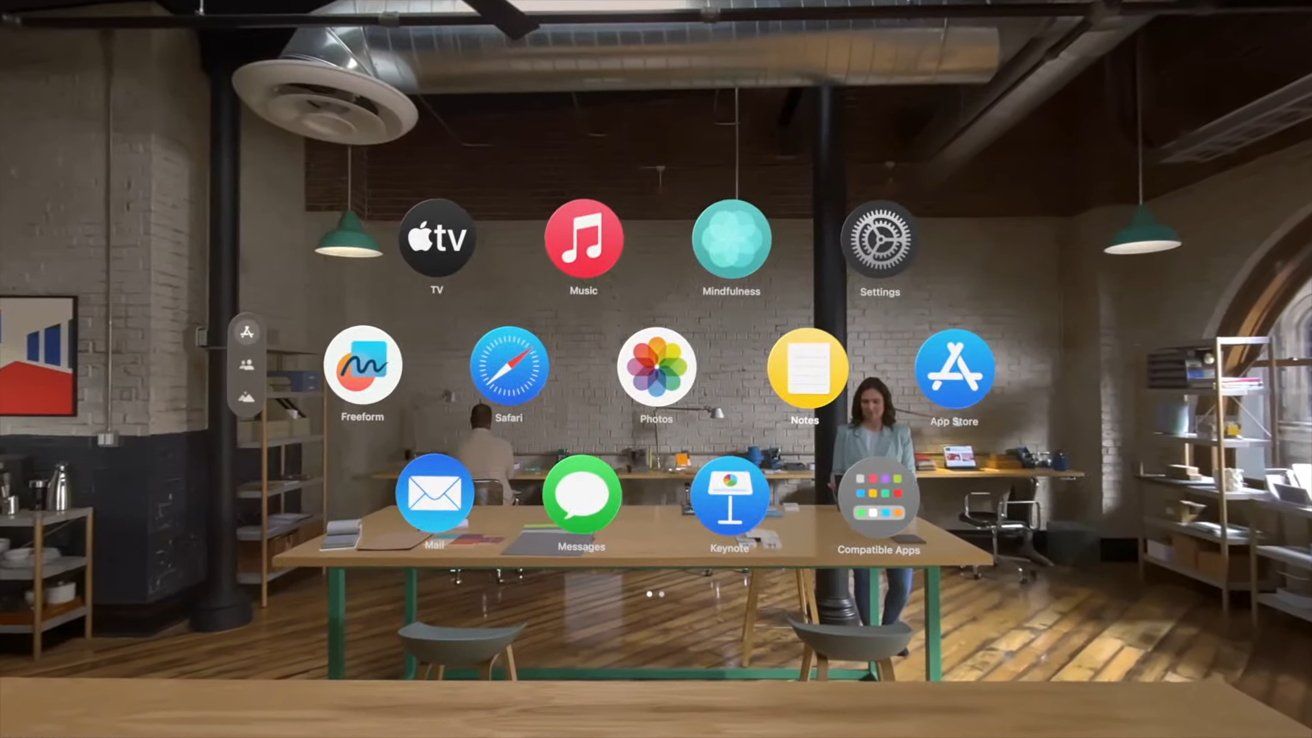
Apple Vision Pro’s Biggest Innovations
In ways both big and small, Apple Vision Pro is unlike any other headset available today. A few of the device’s most noteworthy features include:
Exceptional Video and Audio
Apple’s headset is built around two micro-OLED displays boasting a combined total of 23 million pixels. That means the device can deliver better-than-4K resolution to each eye, putting it comfortably ahead of most other mainstream headsets.
Meanwhile, the headset delivers sound through a pair of built-in dual-driver “audio pods.” Thanks to Spatial Audio, Apple’s three-dimensional audio solution, this audio will sound like it’s coming from all around you whether you’re in a meeting with coworkers or watching a movie in a virtual theater.
Digital Crown
Apple Vision Pro isn’t just an Apple VR headset. This product is a true mixed reality device that can transport users into virtual environments, layer AR content over their real-life surroundings, or offer something in between these two extremes. To control their level of immersion, headset users can simply turn the “Digital Crown” - a dial located on the right side of the device.
visionOS
Apple has chosen to promote its newest device as something other than a standard virtual reality headset. Instead, it has been branded as a “spatial computer.” visionOS, the headset’s bespoke operating system, is at the heart of this concept. While visionOS is influenced by other Apple operating systems like macOS and iOS, it is custom-built to let users interact with digital content in the real world.
Unlike most headset interfaces today, visionOS doesn’t rely on physical controllers. App navigation is powered by users’ hand gestures, eye movements, and voice commands, allowing for a highly intuitive user experience.
FaceTime
It’s no secret that virtual meetings are a common use case for VR headsets in the office. Apple plans to work towards making these meetings as frictionless as possible by offering an XR version of FaceTime their widely-used video/audio communication platform.
In FaceTime meetings, Apple Vision Pro wearers will take the form of a “Persona” (a photorealistic digital version of themselves). But virtual FaceTime meetings aren’t limited to headset users, other people can join calls with their computers or smart devices. These people will be represented as life-size “video tiles,” giving them a physical presence in virtual meetings even without a Persona.
EyeSight
While VR and AR headsets can make it easier to connect with people in virtual environments, that usually comes at the cost of isolating users from the outside world. If you’ve ever tried to talk to someone who was wearing one of these devices, you know how strange this can feel, even when they’re able to see you with a passthrough camera. Fortunately, a unique feature known as “EyeSight” aims to mitigate this issue.
EyeSight is powered by data from Apple Vision Pro’s four eye-tracking cameras, which is then applied to the user’s Persona. The result: an exact replica of a headset wearer’s eyes, shown on a display built into the front of the headset.
Security and Privacy
Finally, Apple Vision Pro comes with several features built with privacy in mind. One of these features is Optic ID—a new authentication system that scans a user’s iris to unlock the headset. Along with that, eye-tracking data from the headset is not shared with websites, third-party apps, or even Apple itself.
This device’s commitment to privacy goes both ways, too. When a headset wearer is using the device’s built-in 3D camera to take photos or videos, an EyeSight indicator will let people in the area know what’s happening.
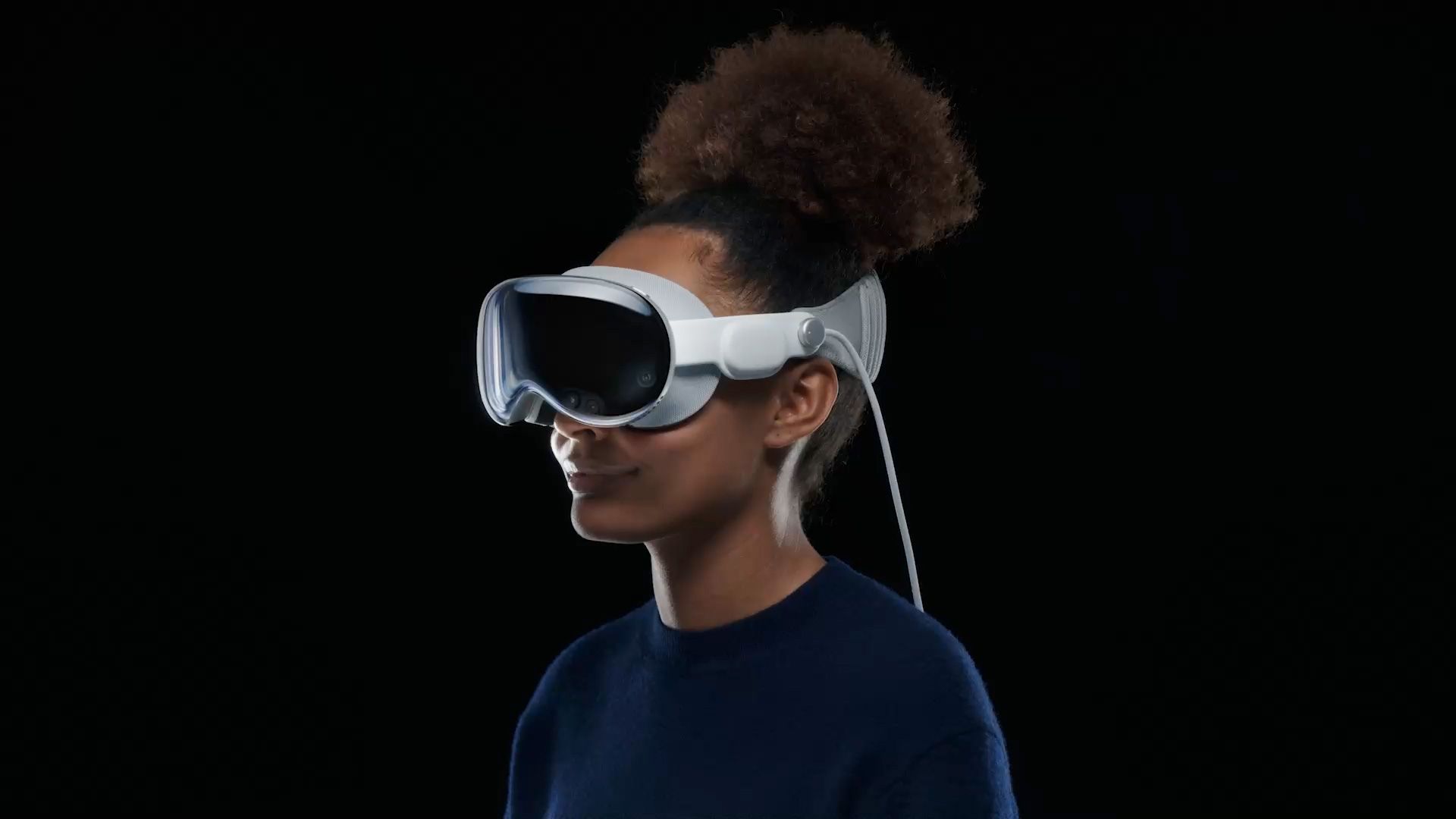
How Can Businesses Use Apple Vision Pro?
Apple Vision Pro boasts an impressive feature lineup, but these features are only as meaningful as their real-world applications. Here’s a look at how businesses and other enterprises can use this headset for:
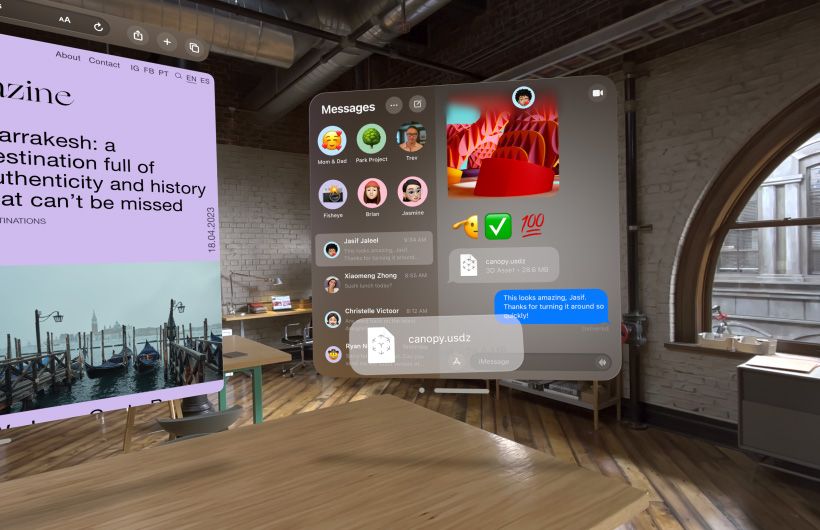
Meetings
Obviously, Apple’s headset isn’t the only XR product that offers virtual meeting capabilities. Still, this headset’s meeting features won’t require your employees to learn an entirely new program. Instead, they’ll be able to use an expanded version of an app they already use daily.
While VR-based meetings are more effective than traditional video conferencing, not everyone has access to the equipment needed to attend them. Apple’s headset splits the difference between the two types of virtual meetings. Apple Vision Pro users can benefit from total immersion, while others can join in by making a call from their phone or computer.
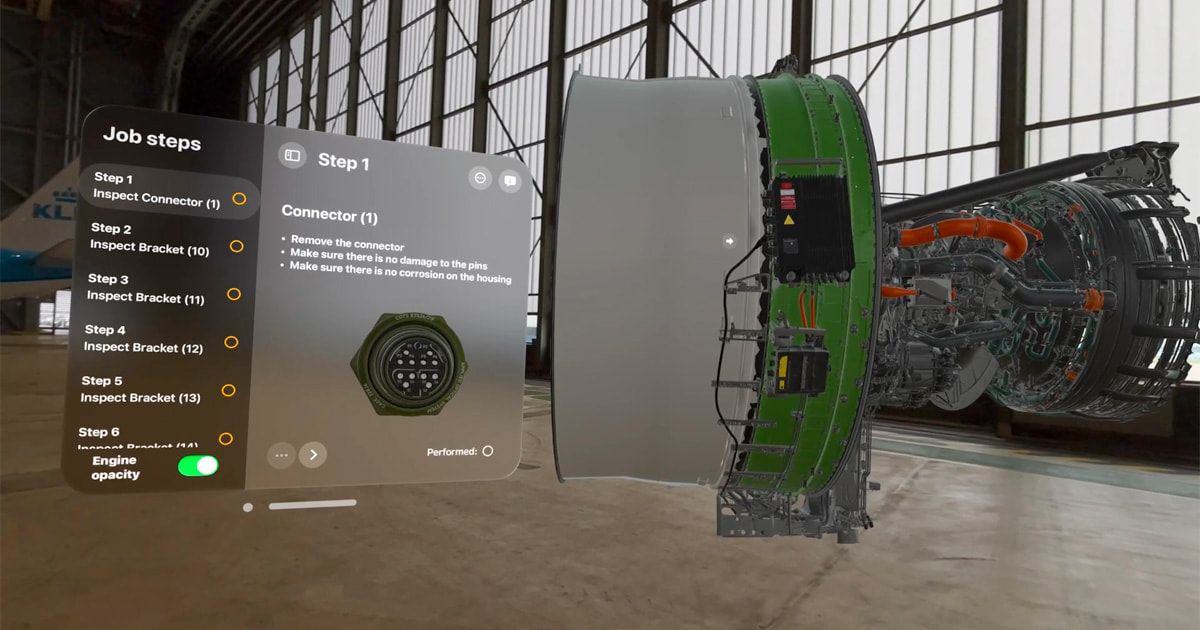
Training
Training is one of the most popular uses of enterprise VR, and Apple Vision Pro should be no slouch in this department. Taking this headset’s ultra-high-res screens, Spatial Audio, and hand/eye tracking capabilities into account, it will be able to deliver incredibly immersive training experiences.
As of summer 2023, it’s hard to say what training programs will be available for Apple Vision Pro when it launches. What we do know is that, like other Apple products, this headset will offer a dedicated App Store. Considering the popularity of VR training and the wide variety of apps available for iPhone, this store will likely feature a broad selection of training options before long.
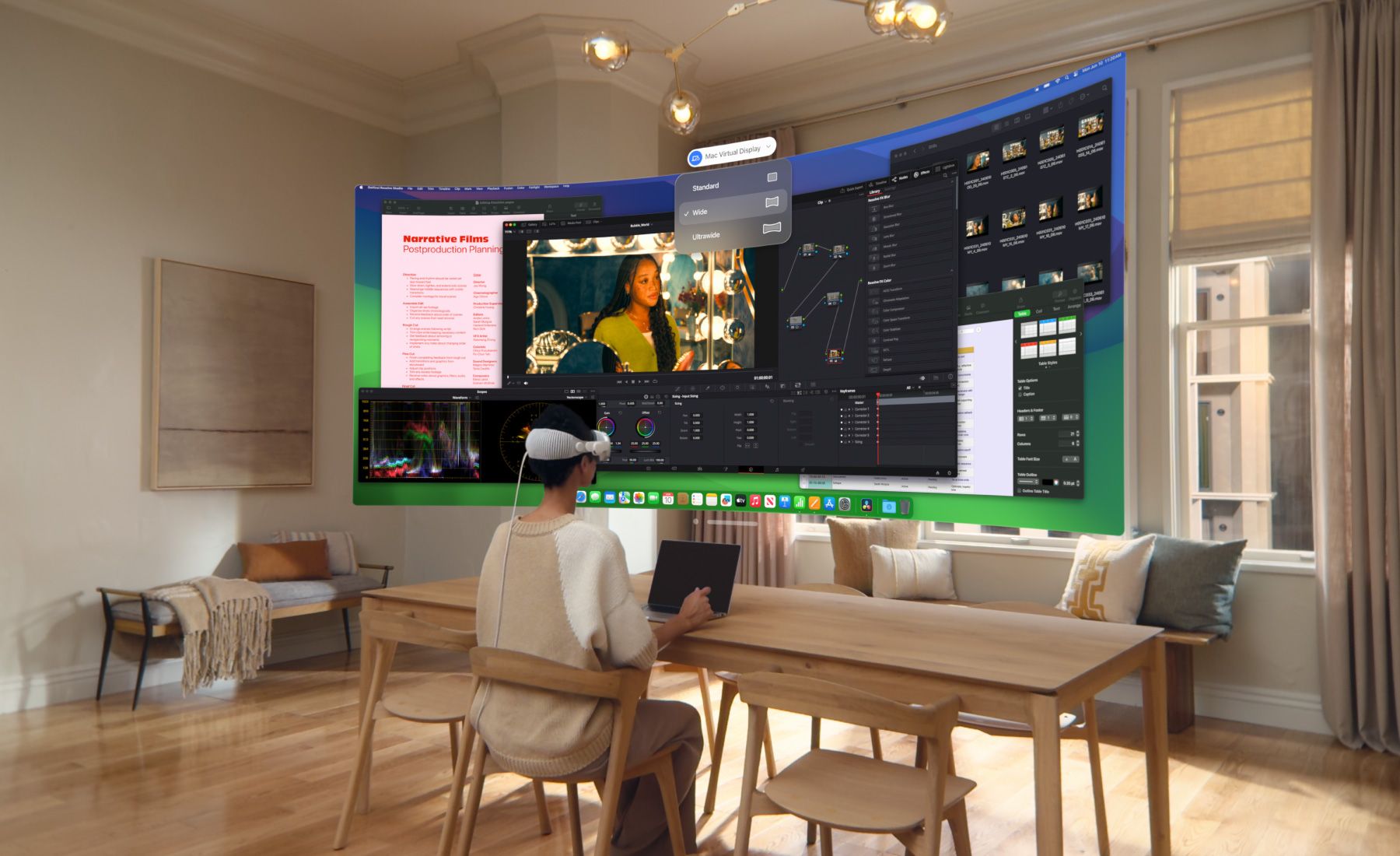
Everyday Work
Training and meetings are common enterprise uses for VR headsets, and all signs point to Apple Vision Pro excelling in these areas. But unlike many devices in this category, this headset’s workplace applications could go well beyond these use cases.
Thanks to visionOS’ 3D interface, Apple Vision Pro users can put app windows wherever they want in the real world. Think of this like a multiple monitor setup, if you had complete control over the number of monitors on your desk, where they were placed, and how big they were. And if employees need to focus without workplace distractions, they can turn the headset’s Digital Crown to immerse themselves in a virtual landscape.
Find the Right Enterprise VR Strategy for Your Company
With months left before Apple Vision Pro launches, it remains to be seen whether the first-ever Apple VR headset will soar like the iPhone and iPad before it or go the way of the company’s disastrous Songs of Innocence promotion. But thanks to its selection of cutting-edge, innovative features, there’s a strong chance that this device could permanently change the extended reality industry.
No matter what virtual reality, augmented reality, or mixed reality headset fits your enterprise’s needs, you shouldn’t tackle the job of developing an XR strategy alone. Instead, reach out to the experts at OneBonsai! We can deliver exceptional off-the-shelf options for safety, industrial, and medical VR training, along with VR rentals for businesses that don’t want or need to assemble their own VR fleets.

EVAREST SCHOOFS
July 11, 2023

